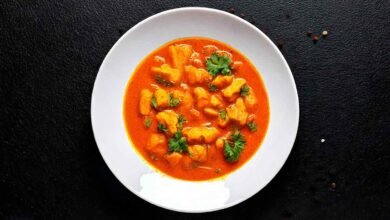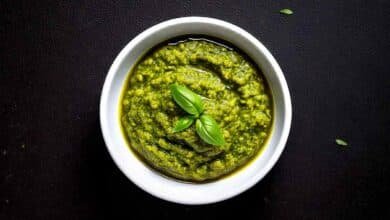Sauces
In the world of gastronomy, sauces are more than mere accompaniments; they are the essence that transforms a dish from ordinary to extraordinary. Whether you’re drizzling a rich béchamel over a lasagna, dipping crispy fries into tangy ketchup, or savoring the complex flavors of a homemade barbecue sauce, sauces play a pivotal role in enhancing flavors, adding moisture, and providing visual appeal to our meals. This category delves deep into the multifaceted universe of sauces, exploring their types, preparation methods, and cultural significance.
Types of Sauces
Sauces can be broadly classified into several categories based on their ingredients and preparation techniques:
Mother Sauces: These are the foundational sauces in classical cuisine, including béchamel, velouté, espagnole, hollandaise, and tomato sauce. Each mother sauce serves as a base for countless derivative sauces.
Emulsified Sauces: These sauces are created by mixing two ingredients that typically do not combine well, such as oil and vinegar. Classic examples include mayonnaise and vinaigrettes.
Reduction Sauces: Made by simmering liquids until they thicken and intensify in flavor, reduction sauces are often used in fine dining to elevate dishes with concentrated flavors.
Salsa and Relishes: These fresh or cooked mixtures add zest and texture to dishes. From the vibrant pico de gallo to tangy chutneys, they bring brightness to any plate.
Hot Sauces: Spicy condiments like sriracha or Tabasco offer heat and flavor to various cuisines around the globe.
Culinary Techniques
The art of sauce-making involves various techniques that can elevate your cooking:
Deglazing: This technique involves adding liquid to a hot pan after searing meat to loosen flavorful bits stuck to the bottom. The resulting mixture forms the base for many delicious sauces.
Thickening Agents: Understanding how to use flour, cornstarch, or roux can help achieve the desired consistency in sauces.
Balancing Flavors: A great sauce often requires a balance of acidity, sweetness, saltiness, and umami. Mastering this balance is key to creating harmonious flavors.
Cultural Significance
Sauces also reflect cultural identities and traditions. For instance:
In French cuisine, sauces are integral to culinary education, with chefs often spending years perfecting their techniques.
In Asian cuisines, sauces like soy sauce and fish sauce are staples that add depth and umami to countless dishes.
Latin American cuisines celebrate vibrant salsas that showcase local ingredients and flavors.
Health Considerations
As food trends evolve towards healthier eating habits, many cooks are reimagining traditional sauces with lighter ingredients. Homemade versions allow for control over sugar levels and preservatives while maximizing flavor through fresh herbs and spices.
Conclusion
In summary, sauces are an indispensable element of cooking that can elevate any dish. They embody creativity and tradition while offering endless possibilities for experimentation in flavor profiles. Whether you’re an aspiring home cook or a seasoned chef, understanding the art of sauce-making will undoubtedly enhance your culinary repertoire. Dive into our collection of recipes and tips on sauces to discover how these flavorful additions can transform your meals into memorable dining experiences!
-
Sauces

Curry
Curry is more than just a dish; it embodies a rich tapestry of culinary traditions, flavors, and cultural significance. Originating from South Asia, curry has evolved into a global phenomenon, encompassing a variety of styles—from Indian curries like butter chicken and paneer tikka masala to Thai curries such as green curry and massaman curry. This article delves into the essence of curry, its diverse types, cooking methods, and the spices that make it a beloved choice for food enthusiasts worldwide. The History and Evolution of Curry Curry’s history is as…
-
Sauces

Pesto
Pesto, a beloved Italian sauce, has transcended its traditional role to become a versatile dip that can elevate any dish. This guide will delve into everything you need to know about pesto, from its origins to various recipes and tips for perfecting this delightful dip. What is Pesto? Pesto originated in the Liguria region of Italy, traditionally made with fresh basil, garlic, pine nuts, Parmesan cheese, and olive oil. The name “pesto” comes from the Italian word “pestare,” which means to crush or pound, referring to the original method of…

